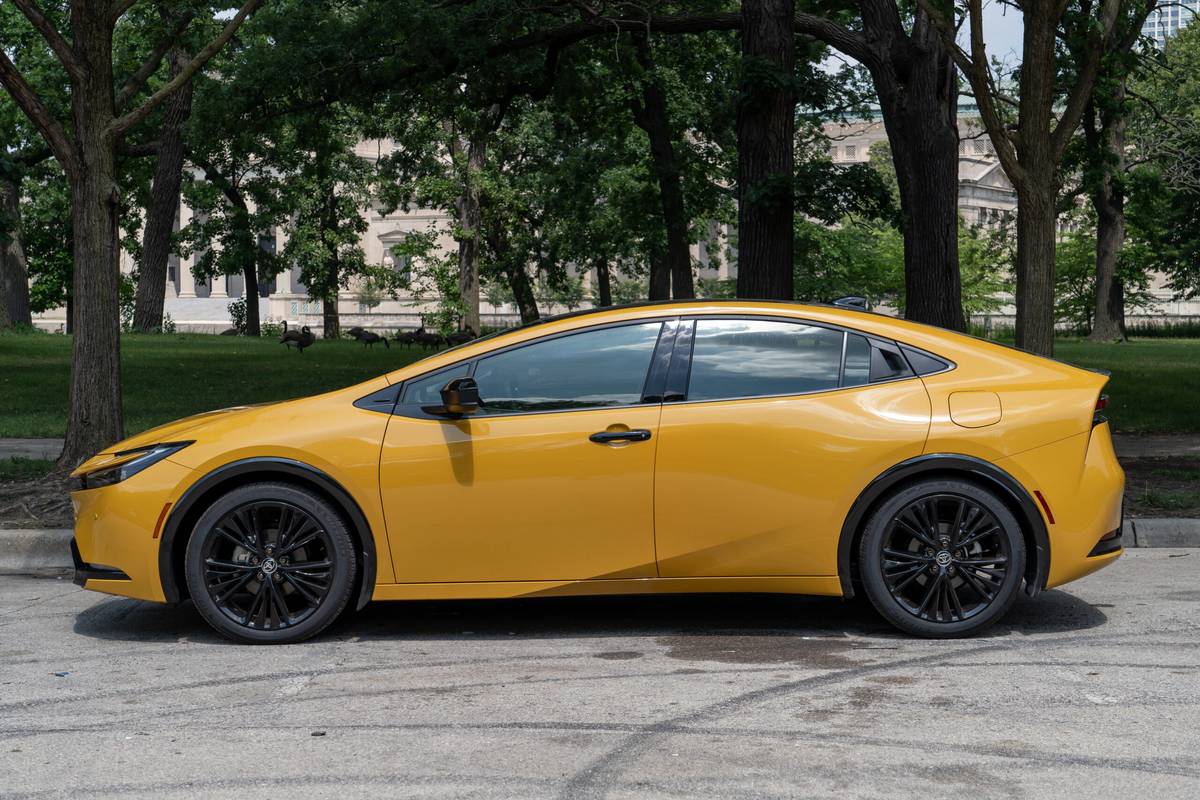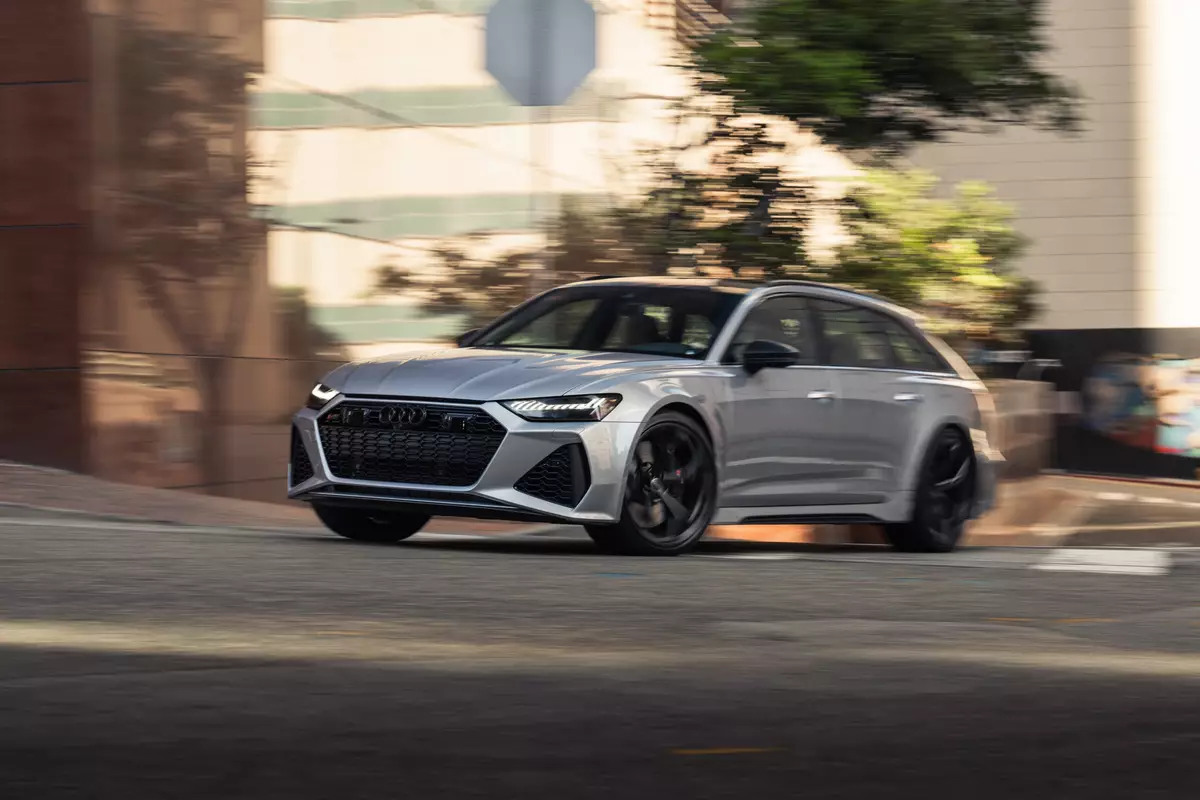2008 Chevrolet HHR: What's New
Vehicle Overview
Introduced for 2006, the HHR sport-utility-like vehicle gets an HHR Panel option for 2008 along with new safety features, such as an optional electronic stability system and a standard tire pressure monitoring system. The HHR flaunts a tall stance like Chrysler’s PT Cruiser, and it’s built on the same platform as the Chevrolet Cobalt sedan. Trim levels include the base LS, midlevel 1LT and top-of-the-line 2LT; a panel van version is also available. It deletes the rear seats and covers the windows with body-colored steel inserts.
Besides the obvious comparison to the PT Cruiser, the HHR also competes with vehicles like the Honda Element and Jeep Compass.
General Motors might not appreciate comparisons between the new Chevrolet HHR and the retro-styled Chrysler PT Cruiser, but the HHR is unabashedly designed to resemble a vehicle from the past, just as the Cruiser is. In Chevrolet’s case, that vehicle is the 1949 Suburban, which ranks as one of the first utility vehicles.
Exterior
Built with a high roof, this four-door wagon’s grille features a prominent Chevrolet bow tie logo. The HHR has a touch-pad rear liftgate and flared taillamps. The HHR has deep-draw flared fenders that tuck in at the rocker panels. A one-piece hood is reminiscent of the 1949 Suburban. Single-cavity headlamps incorporate jeweled lighting effects, and the back window is flush with the body sides.
Two suspensions and two wheel sizes (16 and 17 inches) are offered. In addition to bright chrome exterior trim, the 2LT model includes fog lamps and a bright exhaust tip.
Electric power steering and front-disc/rear-drum brakes are installed. Built on a 103.6-inch wheelbase, the HHR is 176.2 inches long overall, 69.1 inches wide and 62.5 inches tall.
Interior
Up to five occupants fit inside the HHR. A high roof promises appealing headroom and an airy environment. The instrument cluster harks to the past, and interior color combinations feature darker colors on upper trim sections.
The front passenger seat folds completely flat, and the center armrest is integrated into the seatback frame. The rear seats are split 60/40 and fold to form a flat load surface.
Chevrolet says the HHR’s reconfigurable interior can accommodate everything from groceries to surfboards. Maximum cargo volume is 63.1 cubic feet. A concealed 5-inch recessed storage bin in the cargo area sits above the spare tire. When raised, the primary load floor can act as a shelf.
Standard equipment includes air conditioning, power windows and locks, a six-speaker CD stereo and remote keyless entry. GM’s OnStar communication system is now standard on all HHR models. XM Satellite Radio, a power sunroof and a Pioneer audio system with a subwoofer are optional. Remote starting is standard on models equipped with the automatic transmission.
An additional feature in the 1LT model is an MP3 player. The 2LT edition adds antilock brakes, a leather-wrapped steering wheel and gearshift, and Pioneer audio. Heated leather seats are optional with both LT groups.
Under the Hood
Two engines are offered in the HHR. Standard in LS and 1LT models, an Ecotec 2.2-liter four-cylinder produces 149 horsepower and 152 pounds-feet of torque. An Ecotec 2.4-liter four-cylinder that generates 172 hp and 167 pounds-feet of torque is standard in the 2LT and optional in the 1LT. Both engines mate with either a Getrag five-speed manual gearbox or a four-speed automatic transmission.
Safety
An electronic stability system is now available on antilock-brake-equipped models. Antilock brakes are standard on 2LT models, though they’re disc/drum instead of the more surefooted all-disc type. Traction control is available only with the automatic transmission. Side curtain airbags are optional, but side-impact airbags for the front seats are not available.
Driving Impressions
Commanding looks aren’t the only attraction of Chevrolet’s retro wagon. Judged by performance and comfort attributes, as well as solid build quality, the HHR is actually one of GM’s most appealing vehicles.
The HHR handles easily, maneuvers crisply and steers with a light touch. Body lean through curves isn’t bad, but one tends to avoid pushing this wagon too hard. Even in urban settings, the ride is smooth. Occupants might feel pavement imperfections, but few produce noticeable discomfort.
With the optional 2.4-liter four-cylinder engine, acceleration is reasonably spirited for passing and merging, though there’s not a surplus of power. Chevrolet’s automatic transmission operates gently, and except for a whirring sound while accelerating, the HHR is impressively quiet.
Front occupants get plenty of space, though the “chopped” windshield limits the driver’s view of tall objects, such as overhead traffic signals. Rear visibility also could be better. Chair-style seats are reasonably comfortable, with moderate back support and adequate thigh support.
HHR Panel
The HHR panel version is aimed for commercial use, and the rear seats are deleted for maximum storage capability. There’s 57 cubic feet of space, with 5 cubic feet of underfloor storage. The Panel has two front seats, and rear cargo doors replace the conventional rear doors. The rear cargo doors have no exterior handles and open via a dashboard release button or keyless entry fob.
The original 1949 Chevrolet Suburban also had a panel version available, and the HHR Panel takes inspiration from that vehicle. There’s seating for two, and tie-down points are fixed to the floor to strap down cargo.
Powering the HHR Panel are the same engine and transmission options as the standard HHR, including a 2.2-liter and 2.4-liter four-cylinder. Trim levels also remain the same, with LS, 1LT and 2LT available.
Featured stories

2026 Subaru Solterra Review: Necessary Improvements


2025 Toyota Prius Review: Big on Mileage, Small on Space


